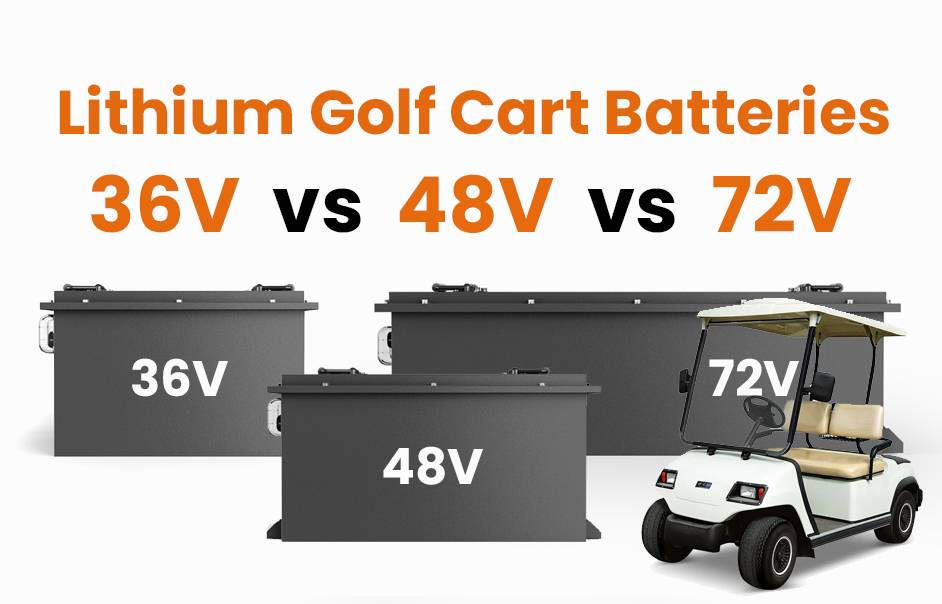
Blog
How Does Tomberlin’s Wireless Charging Partnership with WiTricity Transform EVs?
Tomberlin has partnered with WiTricity to integrate wireless charging technology into its electric vehicles (EVs), eliminating the need for cables. This collaboration leverages WiTricity’s magnetic resonance tech, enabling efficient charging up to 11 kW. The innovation targets golf carts and low-speed EVs, enhancing convenience and supporting broader EV adoption by simplifying energy replenishment.
LiFePO4 Lithium Golf Cart Batteries Manufacturer
What Is the Significance of Tomberlin’s Collaboration with WiTricity?
Tomberlin’s partnership with WiTricity marks a pivotal shift in EV charging infrastructure. By adopting WiTricity’s DRIVE 11 wireless system, Tomberlin vehicles can charge autonomously when parked over charging pads. This eliminates manual plug-in processes, reduces wear on ports, and aligns with smart city initiatives for seamless EV integration. The tech also supports bidirectional charging, enabling future vehicle-to-grid (V2G) applications.
How Does WiTricity’s Wireless Charging Technology Work?
WiTricity’s system uses magnetic resonance coupling, transferring energy between coils tuned to the same frequency. This allows power transfer over gaps up to 25 cm, accommodating imperfect parking alignment. The DRIVE 11 system operates at 85% efficiency, rivaling wired Level 2 chargers. Its SAE J2954 compliance ensures interoperability with global EV standards, making it scalable for commercial and residential use.
Why Is Wireless Charging Critical for Golf Cart and Low-Speed EV Markets?
Golf carts and low-speed EVs prioritize user convenience and operational simplicity. Wireless charging eliminates manual plugging, ideal for fleet vehicles and aging populations. Tomberlin’s adoption reduces maintenance costs (e.g., corroded ports) and enhances safety in wet environments like golf courses. It also future-proofs vehicles for autonomous charging, a key feature as automation permeates the sector.
What Are the Unaddressed Technical Challenges in Wireless EV Charging?
Despite advancements, wireless charging faces efficiency drops over larger distances and alignment sensitivity. WiTricity’s solution mitigates this with dynamic alignment tolerance, but energy loss remains 2-3% higher than wired systems. Additionally, infrastructure costs for installing charging pads and regulatory hurdles for public deployments require resolution. Thermal management during high-power transfers also demands robust engineering to prevent overheating.
Emerging solutions include AI-powered alignment systems and liquid-cooled coils to address heat dissipation. However, standardization remains fragmented. For example, Europe’s IEC 61980 and China’s GB/T standards differ slightly from SAE guidelines, complicating global rollout. Cost reduction through economies of scale will be critical—current wireless systems add 15-20% to vehicle prices compared to wired alternatives.
| Challenge | Current Status | Future Solutions |
|---|---|---|
| Efficiency Loss | 85% vs. 90% wired | GaN semiconductor adoption |
| Alignment Tolerance | ±10 cm lateral | Machine vision guidance |
| Infrastructure Cost | $2,500 per pad | Modular shared pads |
How Does This Partnership Enhance User Experience in EVs?
The collaboration eliminates manual charging steps, enabling “park-and-charge” convenience. Users benefit from reduced physical effort and exposure to harsh weather. For fleets, automated charging ensures vehicles are always operational, minimizing downtime. WiTricity’s app integration provides real-time charging status and billing, streamlining operations for commercial users.
Retirement communities and golf resorts stand to gain significantly. For instance, a Florida golf course could deploy charging pads at high-traffic areas like clubhouses, eliminating dedicated charging stops. Tomberlin’s integration with fleet management software allows operators to track energy consumption per vehicle, optimizing routes based on charge levels. The system’s plug-and-play design also simplifies scaling—a resort adding 50 carts needs only additional pads, not complex wiring.
| User Group | Benefit | Use Case |
|---|---|---|
| Fleet Operators | 24/7 uptime | Airport shuttle services |
| Elderly Users | No bending/plugging | Retirement community EVs |
| Facility Managers | Reduced infrastructure | Warehouse utility vehicles |
What Environmental Benefits Does Wireless Charging Offer?
Wireless systems reduce electronic waste by eliminating cables and connectors. By enabling smarter grid integration, they optimize renewable energy use, charging during off-peak hours. Bidirectional capabilities could let Tomberlin vehicles supply power back to grids, stabilizing demand surges. This reduces reliance on fossil-fuel peaker plants, cutting overall carbon footprints.
Expert Views
“Tomberlin and WiTricity are redefining convenience in EV charging,” says a Redway mobility analyst. “Their wireless solution isn’t just about cutting cords—it’s a strategic move toward autonomy and grid resilience. As SAE standards mature, expect this tech to trickle into mainstream EVs, making ‘charge anxiety’ as obsolete as range concerns.”
Conclusion
Tomberlin’s integration of WiTricity’s wireless charging positions it as an innovator in low-speed EVs. By addressing convenience, safety, and future-readiness, the partnership accelerates EV adoption across niche markets. While challenges like infrastructure costs persist, the collaboration sets a benchmark for seamless, user-centric EV ecosystems.
FAQs
- Does wireless charging reduce EV efficiency?
- Modern systems like WiTricity’s DRIVE 11 operate at 85% efficiency, slightly below wired charging but improving rapidly. Energy loss is marginal compared to gains in convenience and infrastructure flexibility.
- Can existing Tomberlin models upgrade to wireless charging?
- Retrofitting depends on the vehicle’s electrical architecture. Newer Tomberlin EVs post-2024 will have native support, while older models may require hardware modifications.
- Is wireless charging safe in rainy conditions?
- Yes. WiTricity’s systems are IP67-rated, meaning they’re dustproof and waterproof up to 1 meter for 30 minutes. This makes them ideal for outdoor environments like golf courses.




